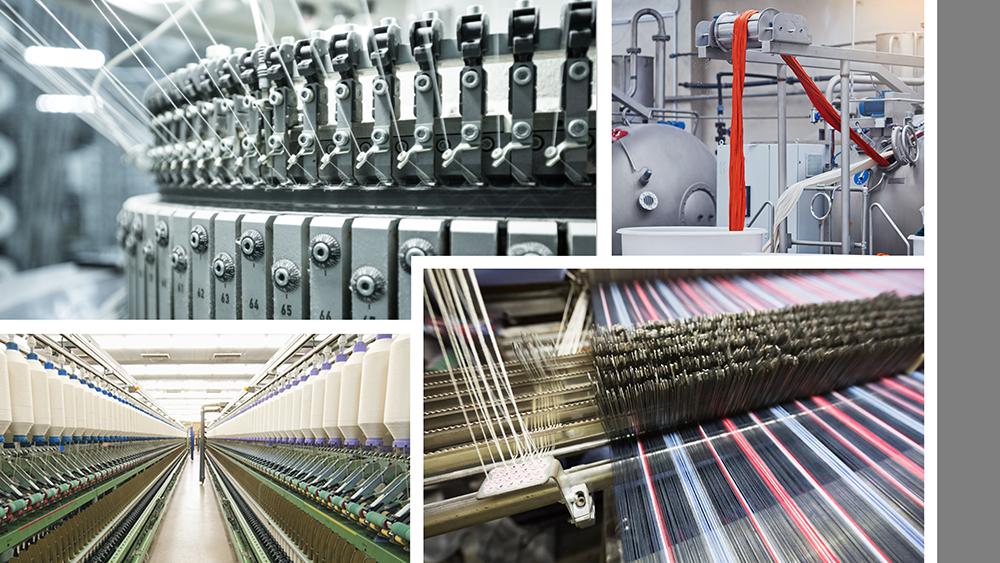2024/7/15

In the first quarter, the global economy continued to maintain a weak recovery, with weak demand remaining the main limiting factor. The global manufacturing industry is gradually eliminating its weaker aspects. China’s economy started well; consumption performance is better than expected; the manufacturing industry investment accelerated growth. In the first quarter, China’s textile machinery industry had a stable beginning, showing growth in key economic operating indicators, which marks a reversal from the decline seen last year. Among the sub-industries, sales of knitting machinery and weaving machinery are still growing. Sales of printing and dyeing machinery have transitioned from a decline to an increase. However, sales of spinning machinery have decreased, and overall, sales of chemical fiber and nonwovens machinery continue to decline.
I.Economic Operation
Industry revenue and profitability both achieved double-digit growth in the first quarter of this year. According to the National Bureau of Statistics, the operating income of textile machinery enterprises above the designated size increased by 13.12% year-on-year from January to March, marking a 21.47 percentage point rise compared to the same period last year. The total profits of textile machinery enterprises above the designated size surged by 41.46% year-on-year. Operating income margin reached 6.77%, seeing a growth of 1.21 percentage points over the same period of the previous year. 32.04% of textile machinery enterprises operated in deficit, which declined by 2.32 percentage points year-on-year. And the loss of value decreased by 28.32% year-on-year.
According to the National Bureau of Statistics, the total cost of the textile machinery enterprises above the designated size increased by 11.53% year-on-year in the first quarter. The share of three overheads in the turnover of textile machinery enterprises above the designated size was 9.55%, which was 0.42 percentage points lower than the same period in 2023. Selling expenses rose by 9.01% year-on-year, representing 3.64% of the total. Management expenses also surged by 14.60%, accounting for 6.32% of the total. Additionally, financial expenses declined by 30.63%, making up 0.53% of the total.
Accounts receivable and finished goods inventory of the industry increased. According to the National Bureau of Statistics, the turnover of accounts receivable grew by 4.98% year-on-year in the first quarter, which is 1.14 percentage points higher than the same period of the previous year. The inventory of finished goods of textile machinery enterprises above the designated size increased by 3.69% year-on-year, which was 12.15 percentage points higher than the same period of the previous year.
II.Foreign Trade
According to the General Administration of Customs, China’s foreign trade of textile machinery totaled US$ 1.65 billion in the first quarter, declining by 10.54% year-on-year. Thereinto, the exports of textile machinery totaled US$ 1.05 billion, down by 5.87% year-on-year, while the imports stood at US$ 599 million, declining 17.70% year-on-year.
1. Import
From January to March, China imported US$ 599 million worth of textile machinery from 52 countries and regions, declining 17.70% year-on-year.
By product category, auxiliary equipment & spare parts ranked first, with imports amounting to US$ 174 million, up 18.54% year-on-year, accounting for 28.99% of the total. In addition to auxiliary equipment & spare parts and printing, dyeing and finishing machinery, the other five categories all saw a decline in varying degrees. In which, nonwoven machinery dropped the most. And the import of chemical fiber machinery decreased significantly due to the saturation of production capacity.
From January to December last year, the top five countries and regions exporting textile machinery to China were Japan, Germany, Italy, Switzerland, and Belgium, totaling US$ 2.49 billion of trade volume, down by 4.23% year-on-year. These countries accounted for 84.12% of the total imports. Japan continues to hold the top position among exporters and sustain a positive growth trend.
2. Export
In the first quarter, China exported about US$ 1.05 billion, down by 5.87% year-on-year. Out of all the product categories, knitting machinery exports have secured the leading position, accounting for 29.97% of the total export value at US$ 315 million, up by 18.97% year-on-year.
Among the seven categories of textile machinery, knitting machinery and printing, dyeing, and finishing machinery experienced growth, while weaving machinery saw a significant decline.
As for the export destinations, in the January-March period, China’s textile machinery exports to India, Vietnam, Bangladesh, Türkiye, and Pakistan accounted for 55.33% of the total exports, seeing a year-on-year decrease of 8.69%. The countries mentioned above are major destinations for China’s exports. The exports to the countries and regions along the “Belt and Road” Initiative amounted to US$ 809 million, seeing a year-on-year decrease of 4.42%. Thereinto, exports to Southeast Asia and Central and Eastern Europe have increased.
In the first quarter of 2024, the global economy continued to face challenges, with consumption growth slowing in developed countries, investment activity staying weak, and overall inflation levels decreasing. Among developed economies, the United States economy remains resilient, while Europe’s economic vitality is still lacking, and Japan has started to increase interest rates to move away from negative interest rates. While China’s economy displayed a slight improvement, the rebound in consumption, fixed-asset investment, and foreign trade data surpassed expectations.
It can be seen that the textile machinery industry is still facing a complex and volatile environment. The sustainability of the recovery of overseas demand is uncertain, while the foundation of China’s economic development still needs to be strengthened. In the realm of advancing new industrialization, China’s textile machinery sector will continue to promote digital, intelligent, high-end, and eco-friendly growth based on scientific and technological progress. The deep integration of artificial intelligence technology and advanced manufacturing will usher in a new era of intelligent manufacturing technology, expanding the potential for innovative products and equipment. The textile machinery sector should take advantage of these opportunities, promote high-quality development, and facilitate the transformation and upgrading of the industry.
Source: CHINA TEXTILE LEADER Express



Authority in Charge: China National Textile and Apparel Council (CNTAC)
Sponsor: China Textile Information Center (CTIC)
ISSN 1003-3025 CN11-1714/TS
© 2025 China Textile Leader, all rights reserved.
Powered by SeekRay